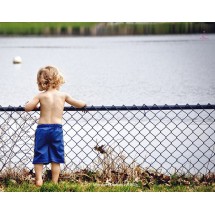Babies are learning all the time. Right from Day 1, your mini-me is downloading information from his surroundings through all his senses, and seeking to make sense of his world. As the months go by, he learns to sit up, to babble, to crawl, to bat at a ball.
As parents, we are sometimes stumped for activities that we can do with baby. There’s only so much eye-gazing, raspberry blowing and book-reading we can do each day! Here are some activities that you can carry out with your child that give him a chance to practice his growing range of psychomotor skills. Have fun!
Activites to boost gross motor skills
- 6-9 months: Chase the ball
He might not be a crawler just yet (or he might!) but he can certainly reach for a ball that’s juuuust out of reach. A fun way to encourage him to get moving is to unravel a bit of yarn from a ball, and use that to steer the ball in a particular direction. Or use a light rubber or ping pong ball and gently roll it in the direction you want him to go. You’ll be getting quite a bit of exercise from this activity too!
- 6-18 months: Shaky shaky time – Video
Homemade shakers are so easy to assemble. Just fill any bottle or container with rice, beans or even loose change. (Note: bottles are easier to grasp for younger babies) Tape down the lid so it’s more secure, and demonstrate to your child how to shake it. You can have some music playing in the background while you shake, shake, shake away!
- 12-24 months: Build-a-box
Wrap up an assortment of boxes (various sizes) in different colours – tissue boxes, milk cartons, cereal boxes etc. Wrapping paper is fine, as are pages of old magazines or construction paper. Build them up into a “wall”, and let your child knock it down and build it up any which way he fancies. This activity works best if you can get ahold of a few larger boxes – the kind used to pack small items of furniture from Ikea – so that your child has the challenge of moving these bigger items about. You can even hide small (unwanted) items, such as an old key, bits of uncooked pasta or a used pen, in the boxes so they rattle about as he moves the box.

- 12-24 months: Help with the laundry
Even little babies can help mummy with the housework! Once your child can stand and understand the concept of passing an item to you, you can get him to pass you pieces of clothing, one by one, from the laundry basket to the washing machine, or from the washing machine to you for pegging up. It definitely slows down the process, but it fosters a sense of responsibility in your child while allowing him to practice trotting back and forth.
Activities to boost fine motor skills
- 9-36 months: Play with dough – Video
Dough is a great vehicle for sensory play that most children love. Make it even more interesting by adding some pasta pieces to the mix, so it creates a different texture and opens up more “design” possibilities. If you’re using commercial play dough, do supervise at all times to prevent your child from ingesting it. We recommend making your own chemical-free and edible dough at home – it’s safer and cheaper too!
- 12-36 months: Paint with fingers
Finger painting is a great way to introduce your child to the world of art. Finger paints provide a sensory rich experience, which you can amplify by adding something granular, like salt or rice grains, to the paint. It allows your child the freedom to explore making marks, which is a crucial step in cognitive development, and a pre-requisite to reading and writing. For older toddlers, you can give them a brush or foam applicator to use to apply the paint.

- 18-36 months: String it up
Threading beads on a string is definitely good exercise for little fingers and train hand-eye coordination. For younger kids, you can give them cut up toilet rolls (cut to get thinner rings) to thread onto thick twine or raffia; preschoolers can probably “graduate” to actual wooden beads, which you can get from most children’s toy departments. Another alternative is to use penne pasta in lieu of the beads. Do supervise younger children, who may experiment with swallowing the beads.
- 18-36 months: Paper collage – Video
This activity requires significant preparation work on your part. Cut up a pile of paper and ribbon into small pieces. You can also use paper punches to create cute motifs like hearts and ribbons. Use a variety of paper textures, such as cardstock, coloured paper, recycled paper, paper napkins, newspaper and tracing paper. Your child can use a glue stick to arrange these pieces any way he fancies on a piece of drawing block. Perfect activity for training those fine finger motor skills!
- 24-36 months: Water play
Another good way to train that very-important hand-eye coordination skill. All you need is a large pail of water, several smaller vessels, and a pouring container (small pitcher or beaker). Your child’s “mission” is to transfer all the water from the big container to the smaller ones. To do this, he’ll need to scoop up the water and control the angle and placement of the pitcher to pour the water into one of the smaller containers. It’s not an easy skill to master, which is why this activity is best done in the toilet, so you don’t have a massive puddle of water to mop up!
By Dorothea Chow






